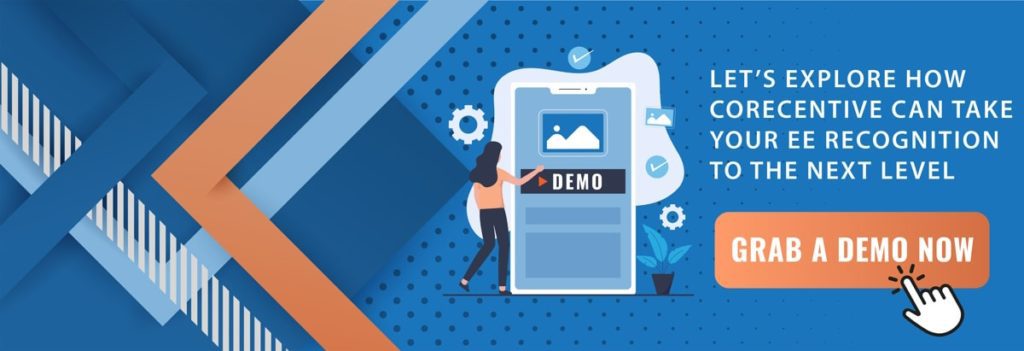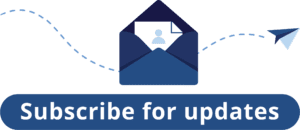In today’s competitive business landscape, recognizing and appreciating the efforts of your employees is more crucial than ever. Employee recognition not only fosters a positive work culture but also boosts morale, productivity, and employee retention. To streamline and enhance your recognition efforts, investing in the right employee recognition software is essential. With a myriad of options available in the market, choosing the best software for your business can be overwhelming. This guide will share the key factors to consider when selecting the perfect employee recognition software that aligns with your organization’s goals and values.
What is an Employee Recognition Program?
An employee recognition program is a systemized way companies say “Thank You” to their hardworking and dedicated employees. It’s like giving them a big pat on the back for doing an excellent job. Businesses create these programs to show appreciation for the effort and time employees put into their work and to motivate them to keep doing their best.
Some programs offer verbal praise during meetings or in front of coworkers, while others use certificates or trophies to showcase appreciation. Many companies give special badges or pins that employees can wear with pride. Some programs provide monetary rewards, like gift cards or bonuses, to make the recognition memorable.
What Types of Employee Recognition Programs Increase Employee Engagement?
In the professional world, acknowledging hard work and dedication is crucial for motivating employees and fostering a positive work environment. Employee recognition programs celebrate hard work, but they impact the bottom line. Robust Employee Recognition Programs increase engagement and reduce turnover. Lower turnover is good business.
Peer-to-peer recognition platforms put the power to celebrate coworkers in everyone’s hands. It’s a more equitable way to recognize wins of all sizes. It improves company culture by fostering goodwill, accountability, and collaboration, and it helps employees feel it more often than traditional top-down recognition programs. Recognition platforms can help employees feel those positive feelings daily.
Here Are a Few of the Most Popular Employee Engagement Programs with Great ROI:
- Verbal Praise: Managers and coworkers may publicly or privately praise individuals or teams for their exceptional efforts, leadership skills, or successful outcomes. This simple yet powerful gesture makes employees feel valued and encouraged to continue excelling.
- Certificates and Awards: Certificates may be given for outstanding performance, meeting challenging targets, or going above and beyond their regular responsibilities. Awards ceremonies add a sense of prestige to the recognition process, emphasizing the significance of the achievement.
- Employee of the Month/Quarter/Year: Whether it’s a monthly, quarterly, or annual distinction, the chosen employee receives special recognition for their exceptional performance, dedication, and positive impact on the workplace.
- Monetary Rewards: Bonuses, gift cards, or profit-sharing are effective means of recognition. These rewards provide tangible benefits for hard work, making employees feel valued and appreciated for their contributions.
- Team Celebrations: Many accomplishments in the workplace are the result of successful teamwork. Celebrating team achievements through gatherings, parties, or team-building events fosters a sense of camaraderie and unity among colleagues.
- Thank-You Notes and Personal Messages: A heartfelt thank-you note or a personalized message from a supervisor or colleague can be incredibly meaningful. These gestures show genuine appreciation for an employee’s specific efforts and contributions.
- Career Development Opportunities: Recognizing potential and dedication, some companies offer career growth opportunities as a form of recognition. Opportunities might include access to training programs, workshops, or mentorship, which help employees enhance their skills and advance in their careers.
- Social Media Shout-Outs: In the digital age, social media provides a platform for public recognition. Companies may use their social media channels to showcase and celebrate employees’ achievements, publicly acknowledging their successes.
- Flexible Work Arrangements: Acknowledging the importance of work-life balance, offering flexible work arrangements can be a form of recognition. Flexibility allows employees to balance their personal and professional lives effectively.
- Company-Wide Events: Special company events, such as annual award ceremonies or appreciation days, are excellent opportunities to recognize and celebrate employees’ contributions collectively. These events create a sense of community and pride among the workforce.
- Peer-to-Peer Recognition: Employees benefit from peer-to-peer recognition programs that makes them feel more connected. Remote employees may feel particularly isolated, but these real-time shout-outs from their coworkers go a long way. Even just a “Thank You!” helps employees remember they’re valued team members.
How Many Hours Each Week Does It Take to Manage An Employee Recognition Program?
The answer depends on how you plan to manage your program. The old school (and more time-consuming) way to manage a program is having supervisors manually track rewards and submit them via email, online forms, or spreadsheets to an Employee Recognition program manager. This manager, usually someone in human resources, orders rewards from a supplier, tracks their arrival, and distributes them.
The amount of time it takes to manage the program varies significantly depending on the number of employees, reward options, and the level of support you receive from the reward supplier. Managing many recognition programs on different platforms can take a lot of time.
The more modern and efficient option is to manage your program with an Employee Recognition Software program. Employee recognition software offers an easy-to-navigate interface that ensures users, including employees and managers, can use the platform effortlessly. Once an administrator completes the initial setup, most employee recognition platforms manage themselves.
The amount of time program managers spend overseeing the program is minimal and includes offering new awards, responding to questions, and publishing social media shout-outs on the company’s platforms. Streamlining the back end of your program with software saves time and money while delivering a robust employee recognition program.
What Does Employee Recognition Software Do?
Technology continues transforming various workplace aspects, including employee recognition. Employee recognition software has emerged as a powerful tool for companies to acknowledge and appreciate their workforce efficiently and effectively.
Here are a few things Employee Recognition Program software can provide and how it helps:
- Creates a Centralized Recognition Platform: Employee recognition software provides a centralized platform for all recognition activities. Employees and managers can access this platform to give and receive recognition, making the process streamlined and easily accessible for everyone.
- Facilitates Peer-to-Peer Recognition: One essential feature is the ability of colleagues to recognize each other. With peer-to-peer recognition, employees can commend their coworkers for their hard work and contributions, strengthening teamwork and camaraderie.
- Simplifies Managerial Recognition: Managers play a crucial role in recognizing exceptional employee performance. The software allows managers to give personalized recognition and more easily foster a positive work culture.
- Encourages Real-Time Recognition: Timeliness is essential in recognition. With real-time recognition, employees receive instant appreciation for their achievements, reinforcing the positive impact of their efforts.
- Builds In Gamification Elements: Some software incorporates gamification elements to make recognition more engaging. Game-like features include leaderboards, point systems, or challenges encouraging employees to participate actively in recognition.
How Does The Best Employee Recognition Software Increase Your Employee Recognition Program’s ROI?
The most effective software streamlines all aspects of your program and helps you measure the impact of each type of reward. It should provide more rewards and data on your program while lightening your workload.
Here Are a Few Top Features to Look for When Evaluating an Employee Recognition Software Program:
-
- Employee Engagement Analytics: The software may provide analytics that measure the impact of recognition on employee engagement. These insights help organizations understand the effectiveness of their recognition programs and make data-driven decisions to improve them. You’ll know what’s working and what isn’t, which is always good for monitoring and increasing ROI.
- Performance Metrics Tracking: The software often tracks performance metrics, enabling managers to assess recognition trends and identify high-performing employees or teams.
- Customizable Recognition Options: Every organization has its unique culture and values. Employee recognition software allows customization of recognition options, such as badges, certificates, or specific awards, to align with the company’s identity.
- Integration with Communication Platforms: Employee recognition software can integrate with existing communication platforms, like Slack or Microsoft Teams, to ensure seamless communication. The integration allows employees to receive recognition within the platforms they use every day.
- Rewards and Incentives Management: Employee recognition software often includes rewards and incentives management features. The software automatically tracking rewards allows companies to efficiently manage and distribute rewards, such as gift cards or bonuses, to deserving employees.
- Capacity for Peer-to-Peer Awards: Peer-to-peer recognition software must be easy for your employees to understand and use. Complexity is not your friend! Software incorporating social sharing features will increase program adoption and excitement if they are easy to use!
- Integration with other HR Products If you already have an HRIS or payroll software like ADP, consider looking for software that integrates with your existing tools. This effort will significantly simplify the administration of your recognition program.
What Decisions Should You Make Before Choosing an Employee Recognition Software?
Selecting the right Employee Recognition Software is an essential decision for any organization. Before making your choice, take the time to determine the details. This will reduce the chance of getting caught up in all the possibilities and creating an ineffective offering.
Answering these thirteen questions will help you get clear on what you need and make it easier to choose the best Employee Recognition Software program for your business:
- What are the goals of our program?
Clearly define the goals and objectives of your recognition program. Determine what you want to achieve, such as increasing employee engagement, improving morale, fostering a positive work culture, or motivating specific behaviors and outcomes.
- What types of recognition do we want to offer?
Decide on the types of recognition you want to incorporate into the program. This could include peer-to-peer recognition, manager-to-employee recognition, team recognition, spot awards, or milestone celebrations.
- How will we decide who gets recognized?
Determine the criteria for recognition. What behaviors, achievements, or contributions are eligible for acknowledgment? Align these criteria with your company values and strategic objectives.
- How often will awards be given?
Decide how often recognition will be given. It could be continuously as achievements occur or through scheduled events like quarterly or annual awards.
- What rewards and incentives will we offer?
Determine the rewards and incentives employees will receive as part of the recognition program. These can be tangible rewards like gift cards, merchandise, or experiences and non-monetary rewards like extra time off or professional development opportunities.
- What is our budget for this program and the software?
Consider the costs of rewards, administration, and any software or tools you may use to facilitate the program.
- How will we get the word out to our employees?
Develop a communication plan to announce and promote the recognition program to all employees. Clear and consistent communication is essential for the program’s success.
- How can we make this an equitable offering that celebrates all our employees?
Ensure the program is inclusive and accessible to all employees, regardless of their role, location, or background. Avoid any biases or favoritism in the recognition process.
- How will we include employees in program design and implementation?
Consider involving employees in the design of the program. Gather feedback and ideas from your workforce to make the program more meaningful and relevant to them.
- How will we measure and evaluate our program’s impact?
Determine how you will measure the impact of the recognition program. Set key performance indicators (KPIs) to evaluate its effectiveness in achieving the program’s goals.
- Who will manage this program?
Decide who will administer the program, track recognition activities, and distribute rewards. Ensure there is clear accountability and processes in place. - How will we teach employees how to use our program?
The best Employee Recognition software in the world won’t help if no one knows how to use it. Training managers and employees to effectively give and receive recognition will create a positive, engaged, and supportive culture. - How do we make sure this program is around long-term?
Plan for the long-term sustainability of the recognition program. Ensure that it remains an ongoing initiative rather than a one-time effort.
5 Steps To Picking The Best Employee Recognition Software.
- Get Leadership Buy-in Early: When pitching an Employee Recognition Program and software to the leadership team, start by sharing its measurable positive impact and how that will impact the bottom line. Share reporting features, case studies from similar programs, and data from sources other than the software company. Your goal is to shift the culture enough that these rewards become a pivotal part of operations, not a frivolous fad that will get cut from the budget anytime revenue drops.
- Consider All Costs: Always look for surprise costs that aren’t disclosed upfront. Setup charges, technology fees, and other add-ons can increase your price and cut your ROI. Ask questions about all costs before you start the program and get all the details in writing. Remember to add sales tax and shipping & handling fees to your cost estimations.
- Budget for Taxes: Some award programs, such as years of service programs, are exempt from payroll taxes, and some are not. Consult your tax advisor to ensure you understand all potential costs before rolling out an Employee Recognition Program.
- Decide on Private vs. Public Recognition (Or Both): Do you want a social component? Having the option for private recognition can be important to some who may feel shy about receiving public praise. Ensure your chosen system supports private recognition if your employees value their privacy.
- Listen to Your Employees: Irrelevant rewards and recognition guidelines may do the opposite of what you’re hoping for. Hold listening sessions with diverse employees across multiple departments (and locations if you have them). Get their opinions and build their ideas into your Employee Recognition Program.
Employee Recognition Program software provides consistency, transparency, and data that is nearly impossible to create manually. Companies with an existing Employee Recognition program can also increase ROI by adding software to the mix. It will reduce the time spent managing the program and provide a better end-user experience.
Ready to streamline your Employee Engagement Program and increase your ROI? Reach out today to explore how CoreCentive’s Employee Engagement Software can help!


